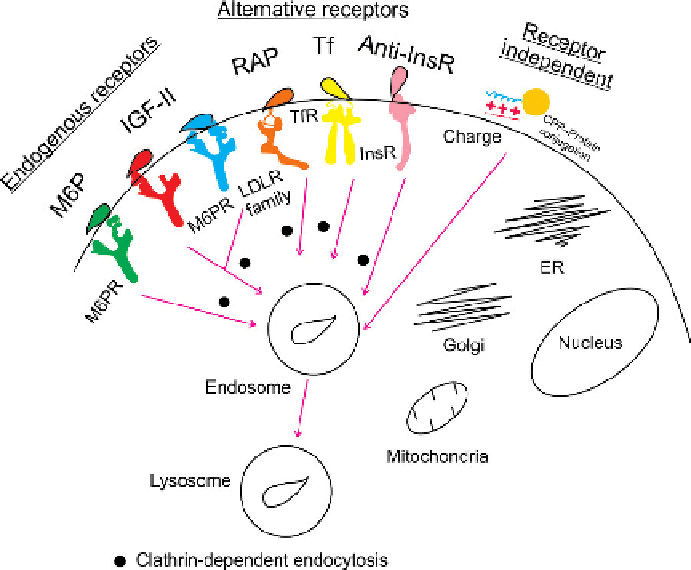Biomedical Engineering Reference
In-Depth Information
carcinoma, and keratinocytes
[463-465]
, both
in vitro
and
in vivo
, with no apparent
toxicity or immunogenicity
[456,466-468]
and results in protein delivery to different
tissues such as the heart, liver, brain, spleen, lung, and skeletal muscle
[469,470]
as
compared to transduction by viral vectors, which have only 30-50% transduction effi-
ciency with highly variable levels of expression within those cells
[465]
. Unlike viral
vectors, CPPs do not have the capacity to integrate the genetic material they deliver,
and therefore there has been no evidence for CPP use resulting in oncogene activation
[468]
. There is also evidence of sustained presence and functionality of CPP-delivered
protein cargo
[451,471,472]
. It does not disrupt the integrity of cell membrane, which
is the most common drawback with membrane perturbation techniques. Further more
CPP, like Tat-mediated protein transduction, shows rapid onset of action as compared
to those by viral vectors, as such viral vectors have some added cellular requirement
for the transcription and translation of the protein
[473]
.
Apart from protein-derived peptides like Tat
[48-60]
and pVEC (derived from
murine vascular endothelial cadherin)
[474]
, CPPs can be produced by the fusion of
hydrophilic and hydrophobic domains from different sources such as MPG, chimera
of peptide from fusion sequence of HIV-1 gp41 protein, and peptide from the nuclear
localization sequence of SV40 T-antigen
[475,476]
.
Figure 11.18
represents general pathways of cell penetration such as those governed
by endogeneous receptors, alternative receptors like Tf, and receptor-independent
Figure 11.18
General pathways of cell penetration.

Search WWH ::

Custom Search